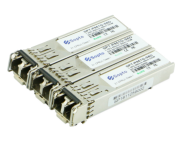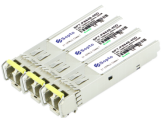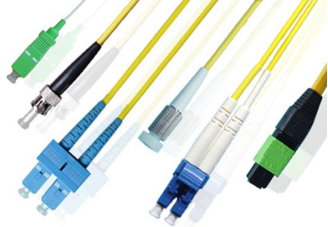With the development of communication networks, optical fibers occupy an increasingly important position among them. Optical modules are one of the main components for constructing optical communication networks, whose function is to realize the conversion of photoelectric signals. However, we usually talk about optical modules. Then, what are the parameters of the optical module and what do these parameters represent? Let me explain in detail below.
Transmission rate
The transmission rate refers to the number of bits (bit) of data transmitted per second, in bps. The transmission rate is as low as 100M and as high as 400Gbps. Currently, there are five commonly used rates: 155Mbps, 1.25Gbps, 2.5Gbps, 10Gbps, and 25Gbps. The transmission rate is generally downward compatible, so 155M optical modules are also called FE (100M) optical modules, and 1.25G optical modules are also called GE (Gigabit) optical modules, which are currently the most used modules in optical transmission equipment. In addition, the optical module in the optical storage system (SAN) has three rates of 2Gbps, 4Gbps and 8Gbps.
Center wavelength
The center wavelength refers to the optical band used for optical signal transmission, the unit is nanometer (nm), currently there are three main types, and different wavelengths will use different pull ring colors to distinguish;
1) 850nm (MM, multi-mode, low cost but short transmission distance, generally only 500m), the pull ring is generally black;
2) 1310nm (SM, single-mode, large loss during transmission but small dispersion, generally used for transmission within 40km), the pull ring is generally blue;
3) 1550nm (SM, single mode, low loss but large dispersion during transmission, generally used for long-distance transmission above 40km, and direct transmission of 120km without relay at the farthest), the pull ring is generally yellow.



Transmission distance
Transmission distance refers to the distance over which optical signals can be directly transmitted without relay amplification. The unit is kilometer (km). The transmission distance of optical modules is divided into three types: short distance, medium distance and long distance. Generally speaking, 2km and below are short distances, 10-20km are medium distances, and 30km, 40km and above are long distances. Multi-mode generally performs short-distance transmission, and single-mode performs medium- and long-distance transmission.
Optical fiber interface type
Refers to the interface type of the optical module connected to the optical fiber jumper. Generally there are several types of MPO, duplex LC, simplex LC and simplex SC. SFP optical modules are basically LC and SC interfaces, and GBIC optical modules are all SC interfaces. The interface types of optical modules above 40G can be MPO, LC. Other interface types include FC and ST, etc. The interface of special optical modules such as electrical optical modules is a network cable RJ45 connector.

Surroundings
Refers to the ambient temperature where the optical module can work normally. The temperature of a general commercial optical module: 0~+70℃; the temperature of an extended optical module: -20~85℃; the temperature of an industrial optical module: -40~85℃; Voltage: 3.3V; Working level: TTL/PECL/CML/LVDS.
Loss and dispersion
Loss is the loss of light energy due to the absorption, scattering and leakage of the medium when light is transmitted in the optical fiber. This part of the energy is dissipated at a certain rate as the transmission distance increases. The generation of chromatic dispersion is mainly due to the unequal speed of electromagnetic waves of different wavelengths when propagating in the same medium, which causes the different wavelength components of the optical signal to arrive at the receiving end at different times due to the accumulation of transmission distance, resulting in pulse broadening and inability to distinguish the signal value.
The two mainly affect the transmission distance of the optical module. In general, the link loss of the 1310nm optical module is calculated at 0.35dBm/km, and the link loss of the 1550nm optical module is calculated at 0.20dBm/km. The calculation of the dispersion value is very complicated, and generally only Reference;
Laser category
At present, the most commonly used lasers are FP and DFB. The semiconductor materials and cavity structure of the two are different. DFB lasers are more expensive than FP lasers and are mostly used for optical modules with transmission distances greater than 40km. FP lasers are cheap and generally Used for optical modules with a transmission distance of less than 40km.
Maximum receiving sensitivity
Receiving sensitivity refers to the minimum received optical power of an optical module at a certain rate and bit error rate, in dBm. In general, the higher the rate, the worse the receiving sensitivity, that is, the greater the minimum received optical power, the higher the requirements for the receiving end of the optical module. Excluding the increase in link loss caused by fiber aging or other unforeseen factors, the optimal received optical power range is controlled from 2-3dB above the receiving sensitivity to 2-3dB below the overload point.
Service life of optical module
Internationally unified standards, 7×24 hours of uninterrupted work 50,000 hours (equivalent to 5 years)